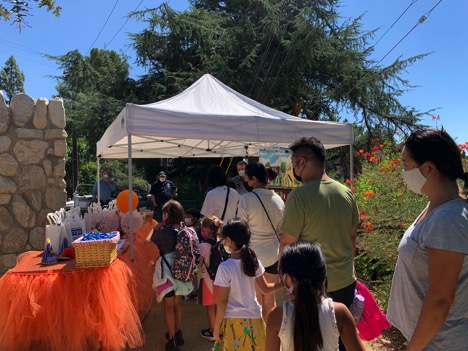
By Bethany BROWN
The Crescenta Valley Water Dept. celebrated the 75th birthday of the Orange Avenue pipeline on Wednesday, Sept. 15 at Crescenta Commons, located on the SW corner of Rosemont and Orange avenues.
CVWD Board President Sharon Raghavachary said they were celebrating to bring awareness to the vulnerability of outdated pipelines and wanted to educate the public.
“It’s an event we thought could be fun and also educational,” Raghavachary said. “If you can put the two together it can be enjoyable and hopefully the information sinks in a little more than dry statistics or a presentation.”
Gift bags were given to passing Monte Vista students as they made their way home after school. The bags contained an informative coloring book and pamphlet discussing the origins of our local water, a sponge, a CVWD bracelet and a cupcake among other goodies.
“We want to bring awareness to the community of the importance of infrastructure,” said CVWD General Manager Nemesciano Ochoa. “A lot of our pipelines and facilities don’t get seen by the public because they’re buried, but by having an event like this it lets everyone know that we have infrastructure in the ground that’s aging and eventually needs to be replaced so we can carry on and ensure safe drinking water for everyone.”
With much of the community’s infrastructure built in the 1950s, a considerable portion of it is approaching or has already exceeded its life expectancy. The Orange Avenue pipeline consists of two individual pipelines, the first laid in 1947 and the second in 1948 having exceeded its life expectancy by 15 years.
Director, Division 5, of Foothill Municipal Water District Frank Colcord said CVWD staff and board have done a good job in the last several years laying out a strategic plan to look at the entire infrastructure and map out a plan to keep up with and replace what is aging out.
“Most [pipelines] have not been replaced yet and are getting to the age where they will start failing if we don’t replace them,” Colcord said. “It’s a whole lot less expensive to replace them before they fail, at least two to three times more expensive after they’ve broken, so trying to do this proactively is super important.”
